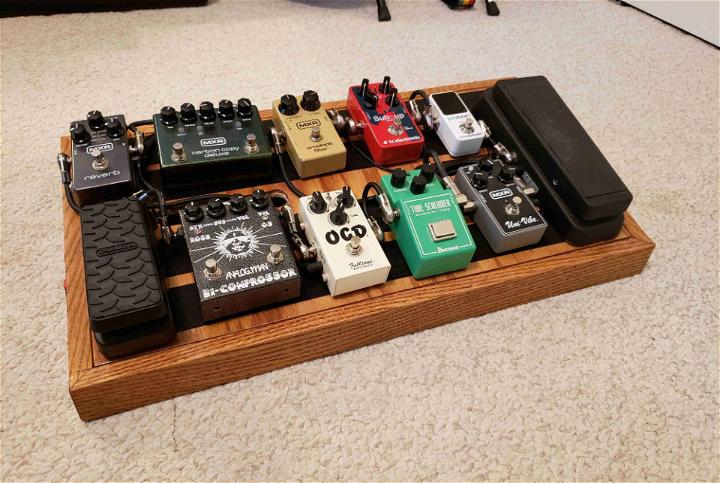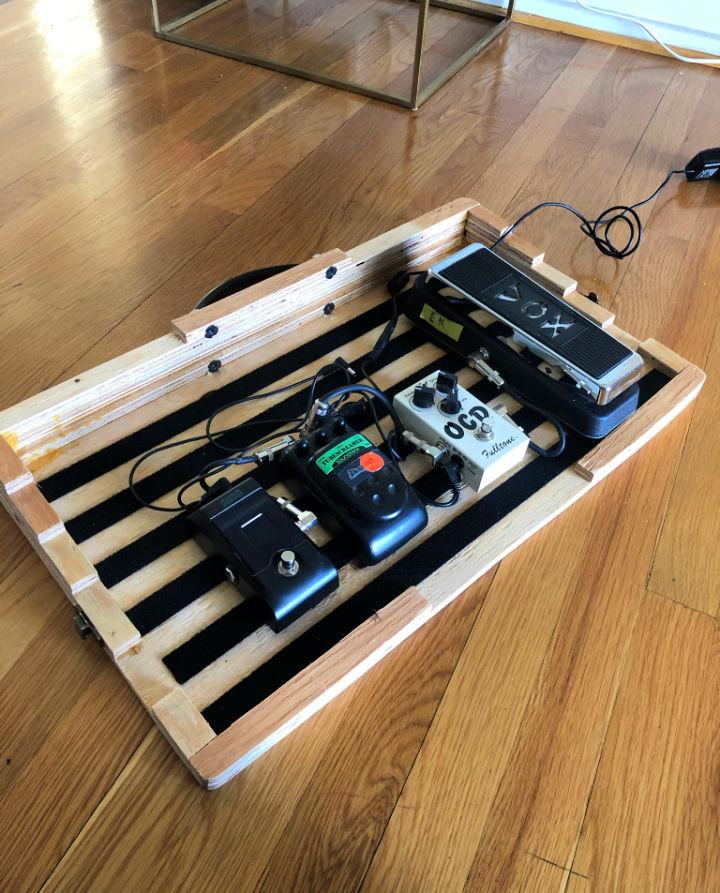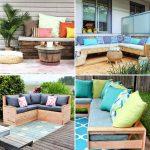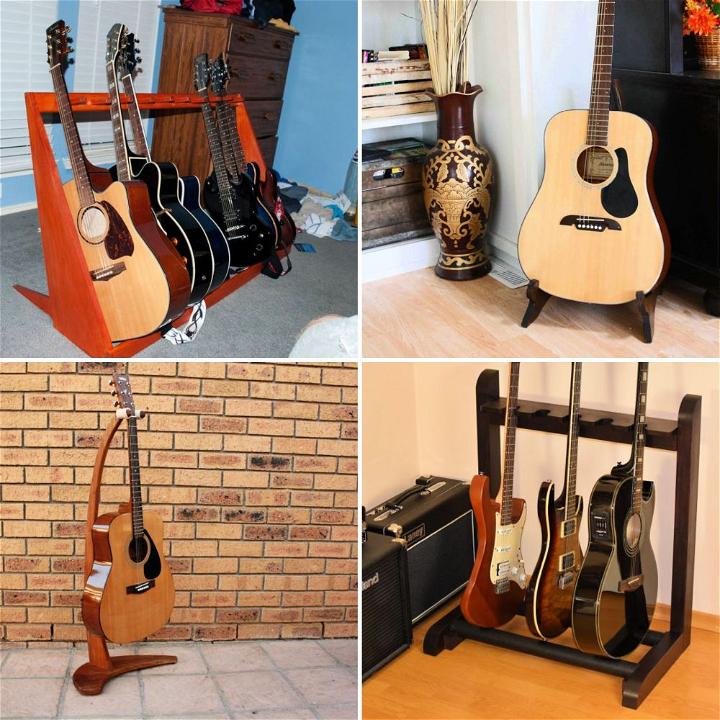Building your own walnut pedalboard can be a rewarding project for any musician looking to customize their gear. This step-by-step guide will walk you through the process, making it simple and straightforward, even if you're new to woodworking. For a visual guide, make sure to check out the tutorial video linked at the end of this article.
Tools and Materials
- Walnut wood (13/16" thick recommended)
- Half-inch thick plywood
- Quarter-inch MDF
- Boiled linseed oil and polyurethane for finishing
- Matte black spray-paint
- High-strength spray adhesive
- Super loop fabric (for pedal attachment)
- Spring-loaded cabinet hinges, friction catches (from Amazon)
- Power strip (from Amazon)
- Rubber feet
- Sandpaper (150, 220, and 400 grit)
- Saw, router, drill, utility knife
- Measuring tape, pencil, ruler
Step by Step Instructions
Step 1: Planning and Dimensioning
- Begin by laying out all your pedals on a piece of half-inch plywood to determine the size and arrangement you prefer.
- Decide on the final dimensions of your pedalboard. A common size is 24 x 14 inches, with a height of 1.75 inches at the front and 3.125 inches at the back.
- Sketch or use software to finalize the layout and dimensions.
Step 2: Cutting and Shaping the Wood
- Cut the walnut wood for the four sides of your pedalboard to the rough length.
- Use a joiner sled or a table saw to get one straight edge and rip them down to width.
- Cross cut the pieces to their final length and shape the sides to the desired height with a taper.
Step 3: Making Cable and Power Jack Ports
- Mark the positions for input/output jacks and power jack on the side of the pedalboard. Usually, positioning these one inch from the bottom works well.
- Drill and route the necessary holes and slots for the jacks.
Step 4: Joining the Pieces
- Cut dovetails or use another method (like box joints or dowels) to join the corners of the pedalboard.
- Glue the pedalboard together, ensuring all pieces are square and aligned.
Step 5: Preparing the Pedal Deck
- Use the plywood to cut out the top deck.
- Design and rout holes in the top deck for cable routing and access.
- Round the external edges and sand the entire assembly.
Step 6: Adding the Bottom Panel
- Cut a bottom panel from quarter-inch MDF to fit inside the pedalboard frame.
- Paint the bottom and top panel with matte black spray paint.
- Attach the super loop fabric to the top panel using spray adhesive for pedal attachment.
Step 7: Finishing Touches
- Assemble the pedalboard, attaching the top with hinges and securing the bottom with rubber feet.
- Apply boiled linseed oil for a first coat, followed by two coats of polyurethane, sanding lightly between coats.
- Install the power strip inside the pedalboard.
Step 8: Final Assembly
- Screw everything into place, ensuring the assembly is sturdy and square.
- Attach your power strip and route your cables neatly.
- Your pedalboard is now ready for use. Place your pedals on the top, attach them using velcro, and enjoy your custom creation.
Video Tutorial
For a step-by-step video tutorial on building a D.I.Y. Walnut Pedalboard, watch this video here.
It pairs perfectly with this written guide, providing a visual perspective on each step, making complex processes easy to follow and understand.
Discover 20 Easy DIY Pedalboard Ideas to Organize Your Guitar Pedals and Make a Custom Setup

1. DIY Guitar Pedal Board

Making your own DIY guitar pedal board is a gratifying endeavor. It not only gives a personalized touch to your music setup but also keeps your pedals organized, making them easily accessible during performances.
2. DIY Modular Pedalboard Plan

A DIY modular pedalboard plan allows you to make a flexible and customizable solution to fit any number and combination of pedals. This adaptability ensures your pedalboard can grow and change with your musical needs.
3. How to Build a Pedalboard

Building your own pedalboard from scratch is a creative and efficient way to house your effects pedals. This process allows you to tailor the size and layout, ensuring every pedal has its place, which can streamline your setup and performance.
4. Pedalboard Out of Scrap Plywood

Utilizing scrap plywood for your pedalboard is an eco-friendly and cost-effective method. This approach doesn't just recycle materials but also provides a sturdy base for your pedals, combining sustainability with functionality.
5. Wooden Pedalboard for Beginners

Building a wooden pedalboard is a great starting project for beginners. The simplicity of woodwork offers an achievable yet satisfying project, producing a durable and aesthetically pleasing base for your pedals.
6. Homemade Skateboard Pedal Board

Transforming a skateboard into a pedalboard is an innovative and space-saving solution. This unique approach adds a touch of personality to your music gear, offering a portable and stylish platform for your pedals.
7. How to Make a Pedal Board

Learning how to make a pedalboard can enhance your musical setup by enabling better organization and accessibility of your effects pedals. This skill allows for a customized arrangement that suits your specific playing style and needs.
8. DIY Pedalboard Wood Case

A DIY pedalboard wood case combines robust protection with a classic look. Crafting this case yourself allows for tailor-made storage and transport for your pedals, safeguarding your gear while adding a personal touch.
9. IKEA Gorm Pedalboard Hack

The IKEA Gorm pedalboard hack is a popular choice for musicians looking for a budget-friendly and effective solution. This innovative approach leverages affordable IKEA products, transforming them into a functional pedalboard.
10. Build Your Own Pedalboard

Building your own pedalboard is a rewarding project that can culminate in a highly personalized and efficient setup. This DIY approach allows for complete control over the design, ensuring it perfectly suits your musical gear and style.
11. Pedalboard Out of Wood for Under $10

Building a pedalboard out of wood for under $10 showcases how accessibility and affordability can go hand in hand. This budget-friendly project doesn't compromise on functionality, proving that great music gear doesn't have to break the bank.
12. Building a Guitar Pedalboard

Building a guitar pedalboard opens up opportunities for customization and improved stage performance. This project allows you to assemble a setup that's precisely arranged to your preferences, enhancing your musical expression.
13. DIY Custom $12 Pedalboard

A DIY custom $12 pedalboard is an example of how cost-effective solutions can still yield highly functional and personal results. This approach underscores the value of smart budgeting without compromising on quality or efficiency.
14. Reclaimed Wood Pedal Board

Utilizing reclaimed wood for your pedalboard not only gives it a unique vintage charm but also contributes to environmental sustainability. This method results in a one-of-a-kind platform with a story, adding character to your musical setup.
15. Make a Pedalboard Out of Metal Case

Making a pedalboard out of a metal case is an excellent choice for those seeking durability and portability. This robust option protects your pedals in transit, offering a reliable and secure solution for traveling musicians.
16. Build a Pedal Board

Building a pedal board is a practical way to enhance your musical performance, offering a structured layout that keeps all your necessary effects within reach. This DIY project can lead to a setup that's tailored to your individual playstyle.
17. $19 DIY Pedal Board

A $19 DIY pedal board demonstrates how with a little creativity and resourcefulness, you can assemble an effective and organized pedal setup without spending a lot. This approach is perfect for musicians looking to maximize functionality on a budget.
18. Pedalboard using West Coast

Using a West Coast pedalboard approach brings a modern twist to traditional designs. This style emphasizes sleekness and efficiency, appealing to musicians who appreciate a minimalist and contemporary aesthetic.
19. Portable DIY Mini Pedalboard

A portable DIY mini pedalboard is perfect for musicians on the go. This compact solution ensures your essential pedals are always within reach, making it ideal for small venues or impromptu performances.
20. Guitar Pedalboard Out of Walnut

Building a guitar pedalboard out of walnuts offers a combination of strength, beauty, and natural charm. This choice of wood adds an elegant touch to your music gear, ensuring your pedals are housed on a platform that's as visually appealing as it is functional.
Conclusion:

Wrapping up this guide, making a DIY pedalboard can be a rewarding and cost-effective project for any musician. By following the steps outlined in this article, you can customize your pedalboard to suit your needs and style. With a little creativity and some basic tools, you can enjoy a personalized pedalboard that showcases your unique sound and enhances your musical performance.






















